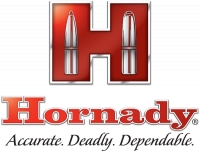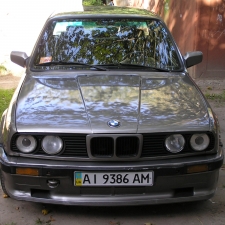Hornady

Joyce Hornady's bankers thought the idea was far-fetched, to say the least. Bullets? Making bullets for reloaders? What kind of business was that? A person could go broke in a hurry. The Hornady Sporting Goods Company was a business they could understand; bicycles, tennis rackets, team uniforms, basketballs, baseball bats and gloves. Now, that was a business. But bullets … no, there was no future there. And so it was that J.W. Hornady learned the entrepreneur's first lesson: "A banker is someone who'll lend you an umbrella only when the sun is shining."
In 1949, with World War II over, with the economy returning to peacetime status, with shortages beginning to recede, with Americans anxious to get on with normal lives, Joyce Hornady started a new business. The nation was optimistic. Hornady was especially optimistic. He knew, he absolutely knew, there were thousands of shooters who wanted what he'd wanted: accurate, deadly, dependable bullets they could afford to reload. "Accurate, deadly, dependable" described his products so well that it became the new company’s first advertising slogan.
Hornady, the son of a pastor, was named for a prominent Methodist bishop, Bishop Joyce, who oversaw church affairs in Colorado and western Nebraska. The resourcefulness Joyce later put to use in his business was evident from his childhood on. His father died from an abscessed tooth—something modern medicine would cure in a moment—and he learned early on to share responsibilities helping his mother and his siblings make do on a tiny pastor’s widow’s pension. Nevertheless, he learned to shoot, he learned to hunt—and he loved both.
Post-War Beginnings
Grand Island, Nebraska, became home to the Hornady family when Joyce accepted work training and teaching marksmanship to the security force at the Grand Island Arsenal during the war. When World War II concluded, it was clear that there would be plenty of surplus ammunition available to shooters, though none of it loaded with bullets suitable for hunting.
Whether or not his bankers saw any opportunity in this situation, he did. The first Hornady bullet was a .30-caliber 150-grain spire point, a bullet that has, from the beginning, been one of the most popular in the Hornady line. There was a demand for hunting bullets, there was a supply of surplus ammunition and cartridge cases—and there was a supply of surplus machine tools used to manufacture ammunition in the war effort. Hornady acquired the first of many Waterbury Farrell assembly presses, installed it in a former auto body shop, and began production.
For all the risk and for all the effort, the fledgling company sold only $10,000 worth of bullets in its first year. Break-even operations were several years off.
Sales tripled the next year, the staff grew to four, and business indicators were positive. Hornady added equipment, confident that more growth lay ahead. The Korean War and the shortages it entailed were not anticipated, but rather than let the company wither, he earned contracts to produce condenser cans for the new war effort as well as some other miscellaneous products.
Mid-Century Surge
When the Korean War wound down, growth did, indeed, resume. By 1958, the company’s need for space required it to move to its present location, an 8,000-square-foot plant with a 200-yard underground test facility.
J.W. Hornady, who from the first had tested each lot of bullets by driving—winter and summer, rain or shine—to the Grand Island Rifle Range, could now just walk downstairs to the ballistics lab and range.
Moreover, instead of spending a great deal of time on the road as the company’s chief salesman, he employed a staff of professional sales representatives to handle marketing duties. The company’s growth required every minute of attention he could provide.
A FOCUS ON QUALITY
The “bullet works,” as his children sometimes lightheartedly referred to the company, was a very interesting business. Hornady Manufacturing Company customers:
Were shooting hobbyists and enthusiasts
Had the same performance expectations as J.W. Hornady did
Could test bullet accuracy and dependability as well as the company’s lab
In brief, customers were generally knowledgeable, demanding, and critical. If a lot of bullets didn’t measure up, feedback was immediate.
Two decades before all of American industry became aware of the importance of total quality control, Hornady Manufacturing was committed to it. J.W. Hornady captured the quality ideal in a simple phrase: “ten bullets in the same hole.” Operationally, on the plant floor, that translated into consistent performance and continuous improvement. The “same hole” could always get smaller. And customers could—and would—always test this for themselves.
INNOVATION & SUCCESS
Just as quality had always been highly prized within the company, so, too, was innovation. It took new form in the early 1960s with the first major change of bullet design the company had undertaken. While the bullet catalog now ranged from .22 caliber to .45 caliber, all spire points retained their traditional conical point shape. The ballistics lab supported experimentation that led to the secant ogive spire point shape common to all pointed bullets currently.
Quality, continuous improvement, and innovation were bedrock principles on which the company’s growth was built. Behind them one could see some of the principles of the company’s founder: honesty, fair value, responsiveness to customer needs—and employee welfare. J.W. Hornady had paid his very first employees more than he paid himself. As the company grew, health and retirement benefits were added. As he succeeded, so he wanted his employees to succeed.
Beyond the Bullet
Market extension is another form of innovation, and the company did this in earnest with the formation of Frontier Ammunition in 1964. Using surplus military brass, the Frontier ammunition line was loaded to factory specifications with Hornady bullets. The advent of the Vietnam War forced the company to switch to new brass cases custom manufactured for it. The experience gained with Frontier led to the creation of its successor, Hornady Ammunition.
As of the early 1960s, the company had tripled its manufacturing space to 25,000 square feet, employed 40 people, hired its first marketing director, acquired the most modern machine tools available at the time, had an inventory of Waterbury Farrell presses for further expansion, and was growing at a rate of 30% per year. Its sales reps were the best in the business. In just a dozen years or so, the company had left its first home in a garage and was now an important member of the growing reloading industry. J.W. Hornady’s bankers were beginning to think he was on to something. And J.W. Hornady himself was becoming one of the industry’s most respected members, for his knowledge, his honesty, his foresight, and his business acumen.
EXPANSION INTO RELOADING
Steve Hornady, Joyce’s youngest son, joined the company in 1970, and Marval Hornady, his wife, began full-time employment in 1972. Additional management support was essential as the company entered the next stage of development. In 1971, the company diversified into reloading tools with the acquisition of Pacific Tool Company and into wholesaling with the acquisition of Western Gun and Supply Company.
Retro Hornady Pacific Ad
Pacific Tool was one of the oldest manufacturers of reloading equipment. It had invented the “C” type reloading press in 1928, thereby beginning the modern era of reloading. Its fortunes had risen and fallen several times before its acquisition by an investor group and its move back to Lincoln, Nebraska, one of the numerous moves it had made in its history.
Pacific had begun to market the Model 105 shotshell reloader, an inexpensive and versatile tool for the casual or beginning reloader. A ready market for this tool fueled Pacific’s growth, and combined operations of the Hornady units continued strongly, so strongly, in fact, that Western Gun was divested so the company could focus on core markets for bullets and tools.
INNOVATIONS IN BULLET DESIGN
The bedrock principles of quality, continuous improvement, and innovation led the company to introduce its “Innergroove” bullet design in 1965. Innergroove bullets were scored inside the bullet jacket tip, ensuring consistent mushrooming whether the bullet was a spire point, round nose, or flat point. In 1977, Hornady introduced an even more important innovation, the “InterLock” design. Bullets with the InterLock feature have an interior ring that locks jacket and core together, thereby minimizing separation.
In its first two decades, Hornady Manufacturing grew from a new business start-up to a multi-divisional, multi-million dollar enterprise, respected within its industry, respected in its own community, and respected by a growing customer base throughout the world. J.W. Hornady was doing what he loved best. He was able at last to go on safari and to take other hunting trips he’d long hoped to do. His wife and youngest son had joined him in the business.
Out of Tragedy- a New Era
In January 1981, traveling with engineer Edward Heers and Customer Service Manager Jim Garber, Joyce Hornady and his companions were killed when the company plane they were flying crashed en route to the SHOT Show in New Orleans. The linchpin of the company was suddenly gone. The company’s founder, visionary, spokesman, leader, and strategist was tragically killed.
After the immediate shock and grief abated somewhat, a giant question remained. What was to happen to the company? There were those who doubted it could survive the tremendous loss of its first and only leader. That was not the belief of Marval Hornady. The family needed to regroup, and so it did. Steve Hornady became president and Marval the chairman of the board. Daughter Margaret Hornady David and her husband, Don, left careers at Polaroid to become vice president and chief engineer, respectively. A new era had begun.
A Company Moving Forward
Executive leadership of the Hornady Manufacturing Company has not faltered in the firm’s first 60 years. What was created in 1949 grew sound enough and strong enough to survive the cruel blow of losing the founder 32 years later. Under Steve Hornady’s leadership, and with the active support and involvement of the Hornady family, the business has doubled, and doubled again, and doubled again. In 2006, Jason Hornady, Steve's son, returned to the company as director of sales and is currently vice president. The stature of Hornady Manufacturing Company within its industry has never been higher.
Hornady Manufacturing has gone from a start-up in a small Grand Island former auto body shop to become the largest independently owned maker of bullets, ammunition, and tools in the world. That’s quite an accomplishment. It demonstrates that a great many things have been done right throughout the company’s history. It suggests as well that the future may prove just as promising.
The Hornady Manufacturing Company is truly more than the sum of its employees, equipment and facilities. A visitor to Grand Island, Nebraska, can quickly discover how active the Hornady family has been in community affairs, how generous in its philanthropy, how concerned for helping others—including the larger shooting community.

comments